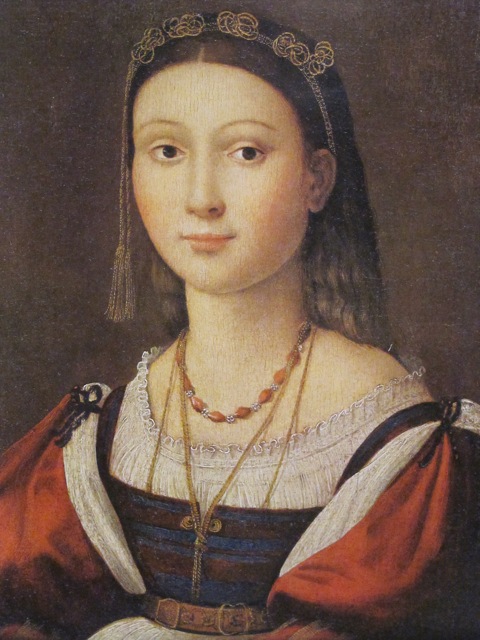Belinda Rathbone
Art
This is a fairly good book about a fairly bad painting.
Image hosted at Art New England
The Boston Museum of Fine Arts bought this painting, around 1969, under the impression that it was by Raphael. And yet, look at it ...
- The right side of the subject's face (left, if you're looking at the painting) is drawn as if it's facing flat forward. There's almost no shading to indicate the rounding of the cheek, the shape of the eye isn't in perspective, and there's too much space between the outer corner of the eye and the edge of face.
- Even allowing for the conventions of Renaissance beauty, the neck is absurdly elongated.
- The irises of the eyes don't even line up on the same horizontal plane. The right eye is looking very slightly up, giving the portrait a subtly cockeyed look.
The answers have to do with museums, and what their role is, and how that role was changing in the tumult of the 1960s and 1970s. Nowadays we're familiar with the idea that museums host "blockbuster exhibitions," usually with corporate sponsorship. That wasn't always so. In the old days, they operated more like clubby little familial enterprises. The right sort of people could go and survey a collection of certified Good Art and feel satisfied about being cultured, while hoi polloi were permitted to wander in and better themselves.
The strongest parts of The Boston Raphael are about this phase transition. Boston's high society before the 1960s was extraordinarily insulated--I'm tempted to say "inbred". The Museum's high-profile director, Perry Rathbone, was a major part of the seismic shift away from that culture, and his acquisition of the so-called Raphael was par for the course.
The weakest part of The Boston Raphael, contrarily, is that it doesn't know what it wants to be when it grows up. Author Belinda Rathbone is Perry Rathbone's daughter, so this could have been a deeply personal account of how the blowup over the painting affected her family . . . and there's a little of that, but not much. Or it could have been the story of Rathbone himself and his rise into the privileged classes--and there's some of that, too, but it isn't sustained. There's a lot of detail--too much; we're talking a memo-by-memo instant replay here--about the battles between Rathbone and the explicitly corporate George Seybolt for control of the MFA's administration. There's a thread about the Italian attempt to reclaim the painting, coupled with a rather dry legal question about whether it was properly declared at U.S. customs.
And then there's the story of the painting itself, which is vexatiously incomplete--almost to the point of being an afterthought. Which is a pity, because the whole book begs the questions I started with: why? Is this painting automatically made worthy by virtue of being a Raphael? If it turns out that it isn't a Raphael, does that automatically make it unworthy? What, fundamentally, makes a piece of art worth spending a lot of money on, or going to a museum for, or fighting for possession of? The Boston Raphael isn't a bad book, but it doesn't really come down to brass tacks on these questions, or really on anything else.
Crossover reading:
- A secondary character in The Boston Raphael is Thomas Hoving, who ran the Metropolitan Museum in New York. His memoir Making the Mummies Dance is unreliable, gossipy, name-dropping, opinionated, and quite entertaining.
- The American Leonardo by John Brewer covers some similar territory about art and connoisseurship, but it's badly flawed by virtue of its poor structure.

No comments:
Post a Comment